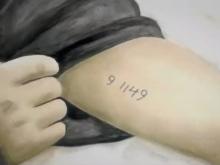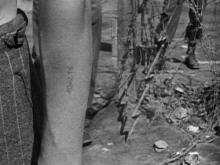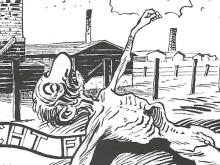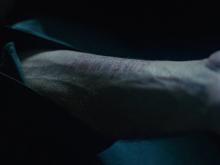The last days
THE LAST DAYS, James Moll, USA 1998
Based on historical footage, photographs, and interviews, James Moll’s THE LAST DAYS (1998) tells the story of five Holocaust survivors from Hungary. In a sequence dealing with the registration process of incoming deportees in Auschwitz, survivor Reneé Firestone shows the number tattooed on her forearm to the camera. The shot is part of an interview passage, in which she describes her expectation to actually get a fabric patch with a prisoner number attached to her clothes. This was closely followed by the shocking surprise that the number was actually engraved into her body. Furthermore, the sequence combines an indirect use, Firestone presenting her own arm with the number in a similar form as in the historical footage, and a direct use by superimposing the close-up of Firestone’s arm with the close-up shot from the sequence with the children in Auschwitz. By doing so, the film creates the notion of co-presence of past and present and uses the transposition of the original shot as a form of evocation of memory. Embedded into the montage and closely connected to Firestone’s own body, the indirect and direct uses indicate a triggering function.
Explicitly focusing on the number and the registration process in Auschwitz, the use of the footage is a specific illustration, although the technique simulates an indicating function of this relation. In addition, the slow panning shot from a close-up of Firestone’s face to her arm is a reenactment of the original close-up shot in order to match both through a transposition. The emotional music, as well as the consecutive historical shot of the children in Auschwitz showing their tattooed arms, however, emphasise its function as a generic illustration of a collective fate. This leads to the next interview, in which survivor Irene Zisblatt continues to talk about her first experiences in Auschwitz. However, the direct use does not primarily symbolise dehumanisation and atrocities but introduces the number as an icon for survival.





